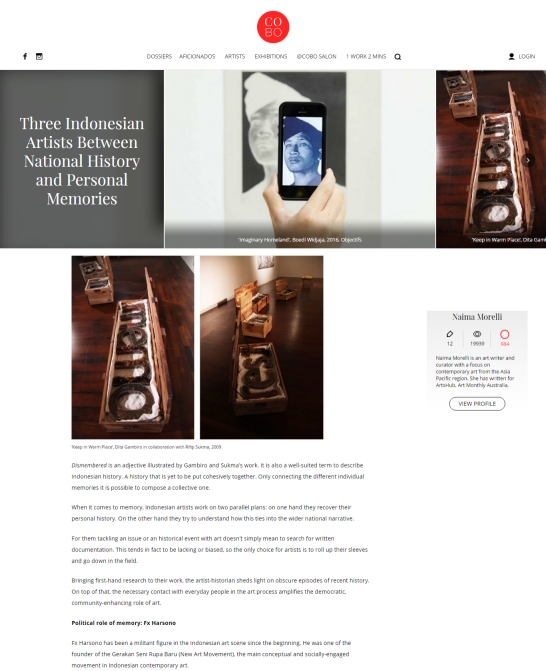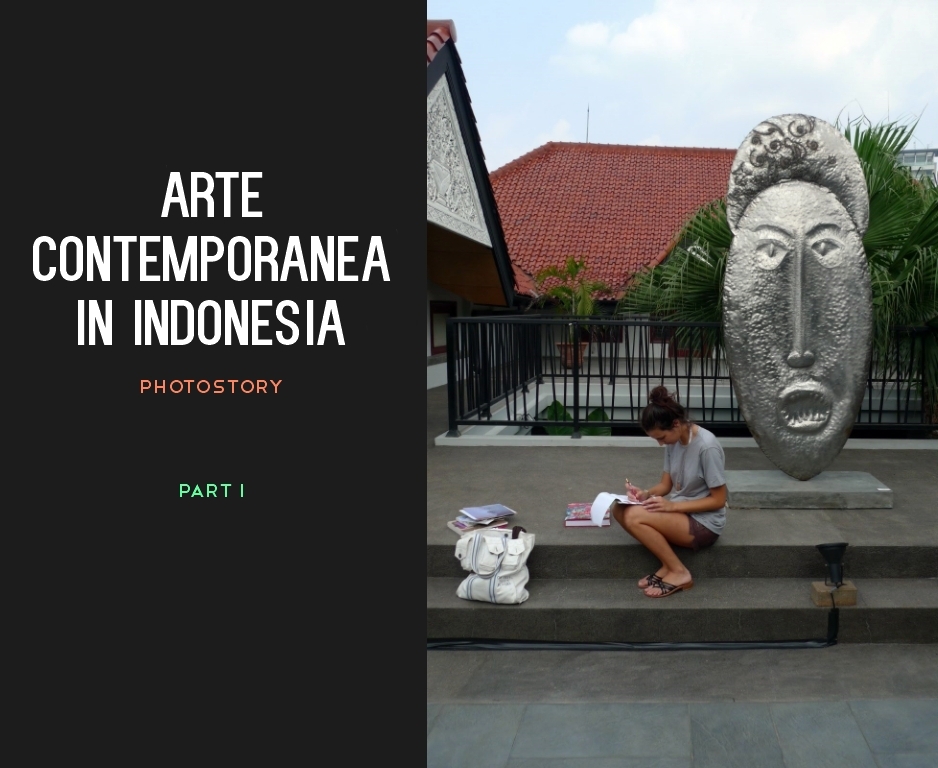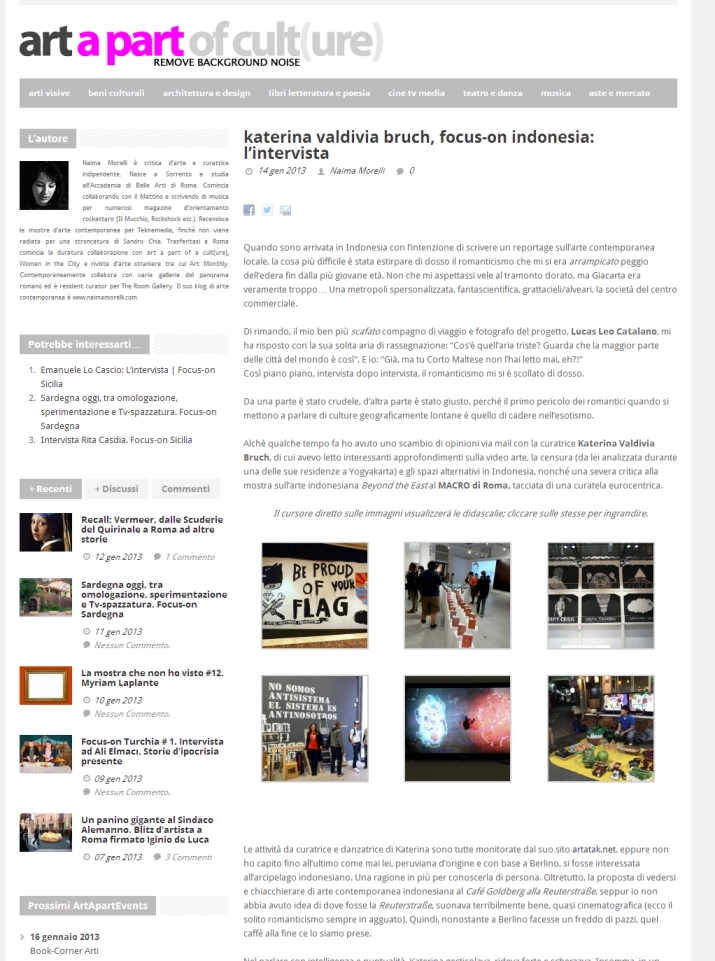
A Giacarta non si vede un capello biondo nel raggio di miglia, invece, al Ranch Market Cafè, dove mi sono data appuntamento con Fx Harsono, ci sono diversi occidentali.
Il posto, dal look volutamente rustico/chic, si trova nella zona Kemang, una zona dove si potrebbe anche passeggiare, nei limiti che il termine “passeggiare” assume in una città trafficata come Giacarta.
Mi trovo a queste latitudini per realizzare un reportage sull’Arte Contemporanea Indonesiana.
Il giorno prima, fortemente irritata per via del collegamento internet mal funzionante che mi impediva di mandare una mail di conferma all’artista, avevo scaraventato per aria un piatto di riso nel prestigioso centro commerciale “Grand Indonesia”. Fortunatamente il mio compagno di viaggio, il fotoreporter Lucas Catalano, era corso ad interrompere le mie mani mulinanti e a tapparmi la bocca e spingermi con un calcio in bagno, prima che la polizia musulmana mi mettesse al fresco per un’eccessiva espressione di personalità.
Censori.
Alla fine la mail è passata e l’appuntamento è stato fissato.
Mi sembrava giusto cominciare la mia serie di interviste da uno dei pionieri dell’arte contemporanea indonesiana.
Fx Harsono arriva un po’ trafelato, saluta un suo amico musicista al tavolo vicino e ordina da bere.
Comincia a parlare in maniera concitata, spiegandomi con dovizia di dettagli ogni passaggio della storia indonesiana, senza dare nulla per scontato, dimostrandosi sinceramente intenzionato a diffondere la conoscenza di qualcosa che gli sta molto a cuore. Essendo uno dei portabandiera dell’arte contemporanea indonesiana, mi stupisco quando mi racconta di non essere un artista a tempo pieno, e di lavorare come professore e come graphic designer: “Mi dedico all’arte il sabato e la domenica. So che potrebbe sembrare un compromesso, ma proprio per il fatto che l’arte non costituisce il mio sostentamento posso evitare di farla piegare a compromessi.
Tutto è cominciato nel 1965. Mi è capitato di esporre anche prima, nel ’62 e nel ’63, ma ho cominciato a fare seriamente nel 1965. A quei tempi ero uno studente, ed in undici demmo vita a questo movimento chiamato New Art Movement. Quello è stato il primo momento importante nella mia vita artistica.
Read More









